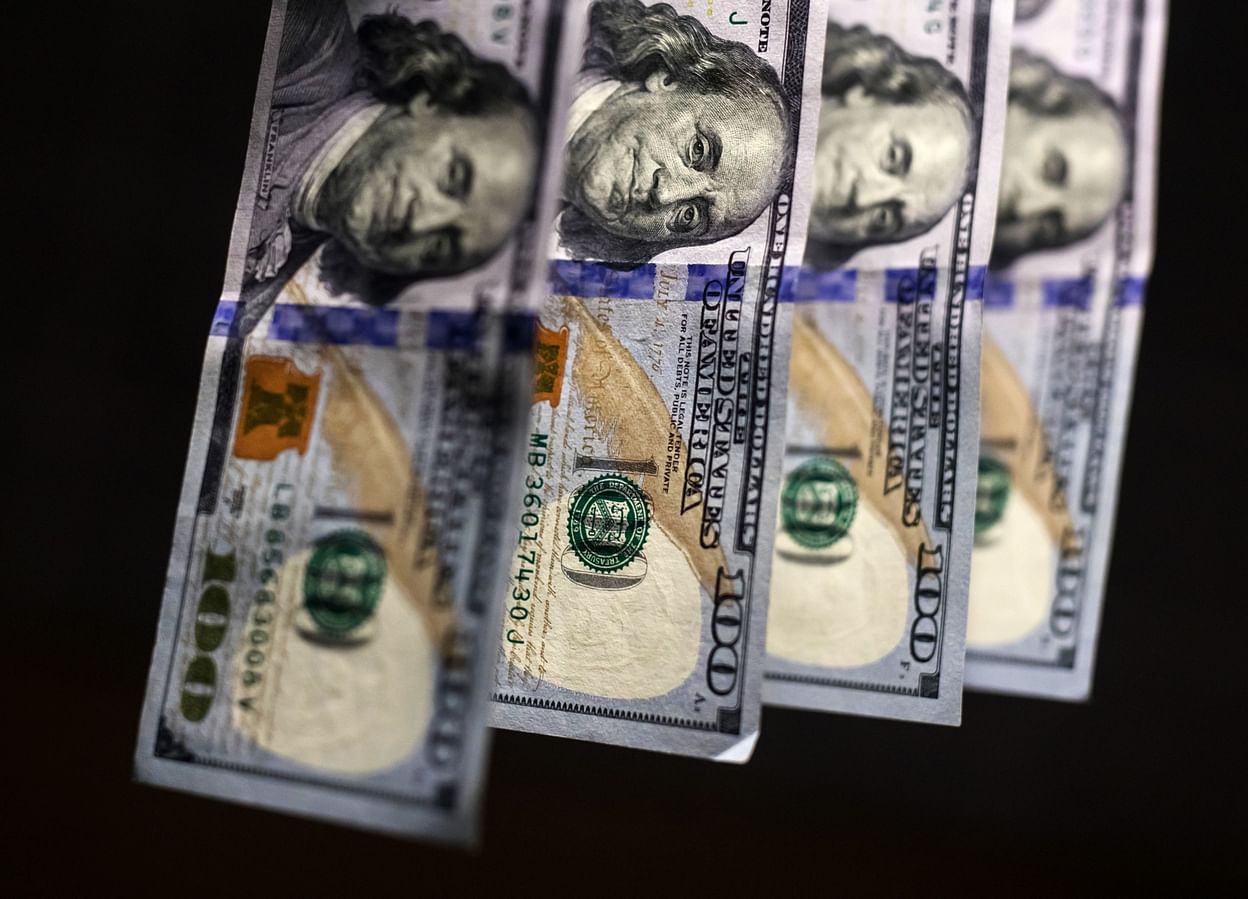The “FinCEN Files,” the world’s latest banking corruption scandal, explained

A few minutes every morning is all you need.
Stay up to date on the world's Headlines and Human Stories. It's fun, it's factual, it's fluff-free.
The FinCEN Files depict a banking industry that, on the surface, complies with regulations and reports suspicious activity but, deeper down, does little to address these concerns and instead contributes to crimes connected to vast sums of “dirty money.”
A recent BuzzFeed News report, in cooperation with the International Consortium of Investigative Journalists and more than 100 news organizations across the world, has revealed how some of the largest American and international banks have done little to stop suspicious financial activity and “dirty money” from flowing through their accounts, potentially funding criminal activity and dangerous criminals themselves.
According to BuzzFeed, the leak of more than 2,500 documents illustrate how “the giants of Western banking move trillions of dollars in suspicious transactions, enriching themselves and their shareholders while facilitating the work of terrorists, kleptocrats, and drug kingpins.”
The majority of the documents included in the leaks are “suspicious activity reports” (or SARs) sent by banks themselves to “FinCEN,” the United States’ Financial Crimes Enforcement Network. Few SARs have ever been revealed to the public and these documents allegedly show how little banks have done to follow up on their concerns of “suspicious activity” occurring within their clients’ accounts.
Unlike other scandals in recent memory, the FinCEN Files are unique in that they stem not just from one or two companies, but implicate some of the largest global banks in this activity. In so doing, they highlight the failure of the current system to report suspicious financial activity and of the banks themselves to clamp down on this activity.
What do the FinCEN files show?
The trove of files covered by BuzzFeed and other outlets paint a worrying picture of global banking. The FinCEN Files depict a banking industry that, on the surface, complies with regulations and reports suspicious activity but, deeper down, does little to address these concerns and instead contributes to crimes connected to vast sums of “dirty money.”
All concerns about transactions made in US dollars must be reported to the Financial Crimes Enforcement Network – or FinCEN – in the US, regardless of whether these transactions take place within the US or not.
In order to comply, banks must file “suspicious activity reports,” or SARs, outlining suspicious transactions and indicating whether they believe a transaction to be connected to fraud.
The documents uncovered by BuzzFeed and other outlets contain some 2,100 of these SARs filed by major US and international banks. In total, these cover more than US$2 trillion worth of transactions made between 1999 and 2017.
Some 12 million SARs were filed between 2011 and 2017 alone, making the SARs included as part of the FinCEN Files just 0.02% of this total, the reports still deal with a significant amount of money and implicate institutions that have previously been accused of corruption and criticized and prosecuted for their mishandling of suspicious transactions.
Alan Rosca, a lawyer who specializes in financial fraud cases, told TMS that, through the FinCEN Files, the public has the opportunity to “peek behind the curtain” at the operations of major world banks, “and it turns out that what’s happening behind the curtain is really ugly.”
What have banks done wrong?
Though the banks implicated in the files have filed SARs, expressing their concern over some of the transactions and activity occurring within their institutions, the implicated financial institutions did little else to stop these activities from occurring, effectively enabling them to continue.
Nate Nead, an investment banker and chief executive officer, told TMS that what sets this most recent scandal apart from past episodes is that “it appears … that the most recent events were perpetuated with the banks’ complicity.”
In one instance, British multinational giant HSBC Bank plc allowed a group of fraudsters running a lucrative Ponzi scheme to transfer millions of dollars from fraud victims around the world, even after they had learned from US authorities of the possible fraud.
The Ponzi scheme, known as WCM777, saw Chinese national Ming Xu raise some US$80 million by selling fake investments in cloud computing, targeting in particular poor and disadvantaged communities.
In September 2013, HSBC was informed by California authorities that it was investigating WCM777 for fraud allegations, which coincided with HSBC filing the first of several SARs over suspicious transactions linked to WCM’s accounts.
Despite its concerns and the notifications from authorities, HSBC did not close WCM777’s accounts until April 2014 when the US Securities and Exchange Commission (SEC) filed charges. By that time, the accounts had already been emptied.
Other banks contained in the leaks are implicated in similar forms of inaction. US giant JPMorgan Chase & Co. allowed the movement of some US$1 billion connected to the fugitive financier allegedly behind the huge Malaysian 1MDB corruption scandal involving a sovereign wealth fund. Standard Chartered PLC is also alleged to have helped move funds for a company based in Dubai that may have had links to the Taliban.
The amount of money contained in these SARs is also significant. Deutsche Bank AG, the German multinational, stands at the top of the list with some US$1.3 trillion of funds connected to suspicious activity implicated in the files, with US bank JPMorgan second with US$514 billion.
Some reports have suggested that banks used the reporting system as legal cover. By reporting suspicious activities, banks could be said to have done their duty, allowing institutions and their executives a legal defense while allowing reported suspicious transactions to continue unabated.
This is likely the case because, as Braden Perry, a litigation, regulatory and government investigations attorney with Kennyhertz Perry LLC, told TMS, “it’s more profitable to bank these clients and pay the consequences later.”
In general, the leaks show “a massive failure on the part of regulators and bank executives of controlling illicit banking conduct,” Perry continued, with banks knowing of suspicious – and potentially illegal – activities taking place within their accounts, but doing the bare minimum to address it.
As Linda Lacewell, the superintendent of the New York Department of Financial Service also tweeted, “the SAR should be the beginning of the analysis not the end.” For too many banks, as these reports show, the bare minimum of action against suspicious activity is too often enough.
Will we see any change?
In the immediate aftermath of reporting on the scandal, shares in implicated banks dipped significantly. Deutsche Bank shares dropped by a significant 8.6%, while HSBC slipped in Hong Kong to its lowest share price in a quarter of a century.
Furthermore, the FinCEN Files are only the most recent scandal for the banking industry as a whole, with major international banks having paid a total of US$20 billion between 2012 and 2015 for having insufficient safeguards in place against money laundering, tax evasion and evasion of sanctions.
Yet, as Mayra Rodriguez Valladares writes for Forbes, this in itself is not enough. As Valladares recognizes, “banking stock[s] are likely to be right back up when the never-ending new cycle throws out another juicy scandal.”
A potential second presidential term for President Donald Trump could also suggest a continuation of weakening banking regulations, allowing suspicious activity as outlined in the FinCEN Files to proliferate.
Furthermore, it would be wrong to suggest that there are not already safeguards and regulations in place to prevent suspicious activities from taking place in banks. As Alan Rosca commented, the leaks of the SARs “made it clear that the banks were aware when money laundering or fraud was perpetrated through their accounts.”
But despite reporting suspicious activity, banks “don’t have any strong incentive to dissociate themselves of such fraud, and allow it to continue through their accounts,” Rosca argued.
The FinCEN scandal reveals, then, not just the failure of banks to abide by regulations, but that the present regulations and systems of dealing with suspected criminal activity within banks are fundamentally flawed.
In 2019 alone, FinCEN received some two million SARs, dwarfing the 2,100 or so included as part of the links. The number of SARs has only increased in the last decade, BuzzFeed reports, as financial institutions have faced mounting pressure to report suspicious activity. Over the same time frame, its report continued, staff numbers at FinCEN have been cut by 10% and “most SARs are never even read, let alone acted upon.”
If anything, the FinCEN Files show that banks have remained overly confident in needing to do little to address concerns of suspicious financial activity involving money that may stem from or contribute to criminal acts.
Even more worryingly, concerns of suspicious activity are flagged by banks themselves, yet appear to be rarely acted upon.
It may take drastic action to force a change to this state of affairs. As Paul Pelletier, a former senior Justice Department lawyer and one-time head of its fraud unit, argues, “the bankers will never learn until you start putting silver bracelets on people.”
Have a tip or story? Get in touch with our reporters at tips@themilsource.com




Comments ()